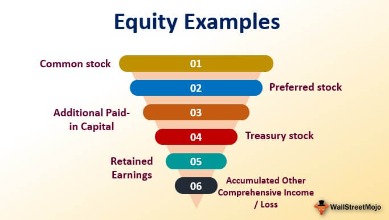Content

If long-term inflation expectations are between 4% and 5%, the growth rate will be between 4% and 5%, implying no actual growth. The terminal value given by the formula is for a date in the future. Estimating the company-specific risk premium is the most difficult Discounted Cash Flow Dcf Formula component of determining a discount rate. Unfortunately, no objective data exists to determine an appropriate company-specific risk premium . The risk-free instrument that best suits the investment horizon should be used to calculate the discount rate.
What is the cash flow formula for DCF?
DCF Formula =CFt /( 1 +r)t
CFt = cash flow. It proves to be a prerequisite for analyzing the business's strength, profitability, & scope for betterment. read more in period t. R = Appropriate discount rate that has given the riskiness of the cash flows.
The remaining half of the first year’s operating costs plus the first half of the second year’s operating costs are scheduled for the end of the first year . In this way, operating costs https://kelleysbookkeeping.com/ are spread equally between the beginning and the end of each year. To answer this question, imagine that your company’s WACC is 5%, which means you’ll use 5% as their discount rate.
Discounted Cash Flow (DCF) Overview
The assumption is that a new buyer might alter the leases to economical rates, allowing the company’s profits to be calculated more correctly. It is the price an investor is willing to pay for an investment given a required rate of return . Under this method, the Terminal Value is based on the company’s cash flows, and with the mid-year convention applied, these cash flows are generated halfway through each year.
What is discounted cash flow rate DCF?
Discounted cash flow (DCF) refers to a valuation method that estimates the value of an investment using its expected future cash flows. DCF analysis attempts to determine the value of an investment today, based on projections of how much money that investment will generate in the future.
The Discount Rate should be based on the required rate of return for a similar investment. Accounting metrics are indirect representations, reflections, or actual or anticipated cash flow forecasts. Direct comparison – It is one of the four regularly utilised strategies. This method entails calculating a discount rate based on real-world transactions. Unfortunately, obtaining the essential information is frequently difficult.
DCF Model Template
And less debt principal repayments, sometimes adjusted for new debt issuance. In each period AFTER that first one, you take the normal discount period and subtract 0.5. If you do this, the first discount period will be the stub period fraction divided by 2. Without the mid-year convention, the first discount period in a DCF will be 0.671 rather than 1.000, the next period will be 1.671 rather than 2.000, and the next one will be 2.671 rather than 3.000. You could adjust these calculations to make them comparable, but it’s rarely the time and effort since the discrepancy is small (~2-3%). Congratulations, if you worked along, you have now valued a business using the DCF method.
- Flow to Equity — this calculates the Free Cash Flow to Equity and discounts these cash flows using the Cost of Equity.
- The net present value is found by subtracting the initial investment cost from the sum of the discounted cash flows.
- The premise of the DCF model is that the value of a business is purely a function of its future cash flows.
- The relative simplicity of the DCF formula means that estimates of the net present value of an investment can be easily changed.

